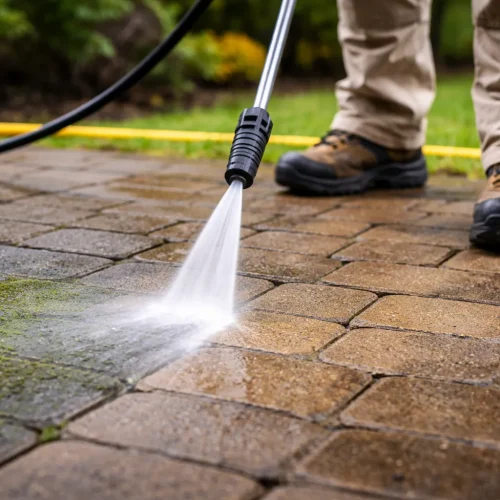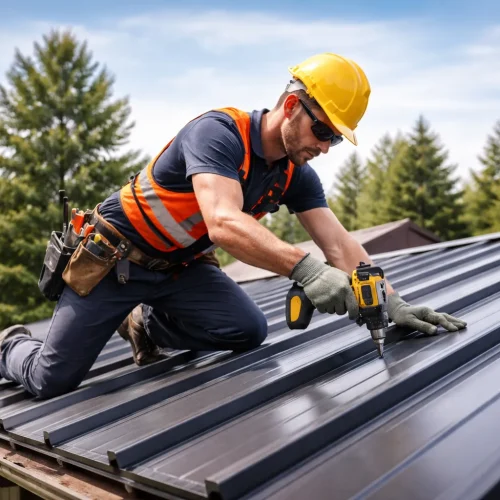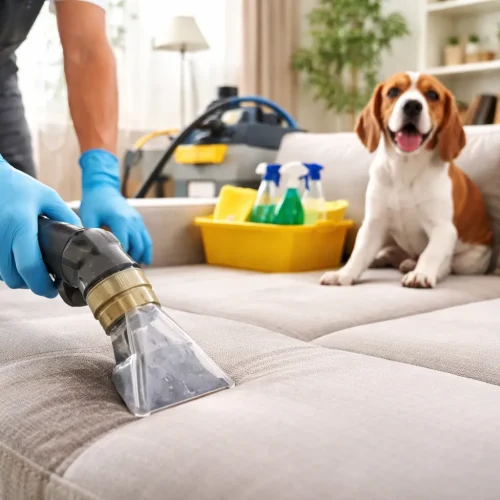
Many building owners underestimate how much small maintenance issues can cost over time. A loose tile, a leaking pipe, or an aging HVAC filter might seem minor today, but ignoring them can turn into major expenses later. It’s not only about the cost of fixing the problem; it’s about what that neglect leads to — wasted energy, frustrated tenants, safety hazards, and unplanned downtime.
Think about how often repairs come up at the worst possible time. A malfunctioning cooling unit in the middle of summer or a roof leak during heavy rain doesn’t just cause discomfort; it disrupts business and can even damage valuable property. Unplanned repairs also tend to cost more because they often require emergency callouts or after-hours service. The truth is, skipping maintenance isn’t saving money. It’s shifting costs into the future — where they’ll be much higher.
This article explores how poor building maintenance quietly eats away at budgets and property value, and what owners and managers can do to stop that cycle.
1. Frequent Equipment Breakdowns
Every building relies on mechanical systems that keep it running — heating, cooling, plumbing, and electrical networks. When these systems aren’t serviced regularly, breakdowns become more frequent and more costly. Components wear out faster, minor faults go unnoticed, and eventually, the entire system can fail without warning.
A common example is neglected air conditioning units. Without proper maintenance, parts overheat, airflow weakens, and compressors fail. That’s when building managers end up calling for commercial HVAC repair services. Regular inspections and tune-ups prevent these emergencies and extend the life of the equipment.
2. Energy Waste and Soaring Utility Bills
When building systems aren’t maintained, they lose efficiency. Dirty filters, blocked vents, and worn-out seals make heating and cooling systems work harder than they should. That extra effort translates directly into higher energy bills. Lighting systems, elevators, and even plumbing fixtures can waste power or water when they aren’t kept in good condition.
Energy waste isn’t always obvious. You might not see it, but it shows up every month on your utility statement. Over time, that steady increase adds up to thousands of dollars lost simply because equipment wasn’t cleaned, tuned, or repaired when needed. Proper maintenance ensures that systems run at peak performance, saving money and reducing the building’s overall energy footprint.
3. Safety Hazards and Legal Liability
Neglecting building maintenance can quickly lead to safety concerns. Loose flooring, exposed wiring, and malfunctioning alarms are more than just inconveniences — they’re hazards. If someone gets hurt because of poor upkeep, the financial impact can be severe. Legal claims, insurance disputes, and even fines can follow.
It’s not just about avoiding lawsuits, though. Keeping a building safe protects everyone who uses it. Proper lighting prevents falls, working ventilation systems protect air quality, and regular fire alarm tests ensure quick response in emergencies. Staying proactive reduces risks and builds trust among tenants and visitors.
4. Tenant Complaints and Retention Problems
A poorly maintained building drives tenants away faster than almost anything else. People expect clean, comfortable, and reliable spaces — especially when they’re paying for them. Leaks, flickering lights, or uneven temperatures create frustration and make tenants question whether their rent is worth it.
Once tenants start complaining, it’s often already too late. Their comfort and productivity are affected, and their perception of the property declines. Replacing tenants is expensive and time-consuming. Maintaining good relationships through consistent building care is far cheaper than dealing with high turnover. Prompt attention to maintenance issues sends a clear message that management values its occupants’ experience and safety.
5. Property Value Decline Over Time
A poorly maintained building loses its value faster than most owners expect. Appraisers and buyers look closely at how well a property has been cared for. Peeling paint, stained ceilings, outdated systems, and visible wear signal one thing — neglect. Even if the structure is sound, the market will view it as a risky investment.
Deferred maintenance can reduce a building’s resale price or limit the number of interested buyers. When problems pile up, potential investors start estimating the cost of repairs and use that to negotiate a lower price. On the other hand, a well-kept building shows that the owner has managed it responsibly, making it more attractive to tenants and buyers alike. Preventive care doesn’t just save on repairs; it preserves long-term value.
6. Emergency Repairs That Drain Budgets
Emergency repairs are almost always more expensive than planned maintenance. When something breaks unexpectedly, building owners often have no choice but to call for immediate service. Emergency callouts often come with higher labor rates, after-hours fees, and rush delivery costs for parts.
Worse, emergencies rarely happen in isolation. A failed pump can damage nearby systems, or a power issue can affect several floors at once. These chain reactions create chaos, disrupt daily operations, and inflate repair bills. Budgeting for routine maintenance is predictable and manageable. Relying on emergency fixes, however, drains resources and leaves little room for other operational needs. It’s much more practical to invest steadily in prevention than to scramble under pressure when something fails.
7. Insurance and Compliance Setbacks
Insurance companies expect building owners to take reasonable steps to maintain their properties. When a claim arises, they often investigate whether neglect played a role. If damage results from a lack of upkeep — such as water damage from an uninspected roof — coverage might be reduced or denied.
Building codes and safety regulations also require ongoing maintenance. Ignoring them can lead to fines, failed inspections, or even temporary closures. Compliance is not just a legal requirement; it’s part of responsible ownership. Keeping accurate maintenance records, performing regular checks, and following safety standards protect both the building and its occupants. These practices also strengthen the owner’s position with insurers and regulators.
8. Disrupted Operations and Productivity Loss
When key systems fail, building operations slow down or stop altogether. A power outage, elevator breakdown, or air conditioning failure can make spaces uncomfortable or even unusable. Tenants may have to send staff home or move operations temporarily. That loss of productivity directly affects revenue and reputation.
Regular maintenance prevents these disruptions. Scheduled downtime for inspections or servicing is far easier to manage than unexpected shutdowns. It also builds confidence among tenants, who rely on stable environments to run their businesses. Consistency and reliability are what set well-managed buildings apart from neglected ones.
Conclusion
Poor building maintenance doesn’t just lead to visible wear and tear — it affects every part of ownership, from expenses to tenant satisfaction. The real cost of neglect isn’t just the repairs but the ongoing losses that follow: higher bills, safety risks, reduced property value, and strained relationships with tenants and insurers.
Preventive maintenance is a form of financial protection. It keeps systems working efficiently, ensures compliance, and avoids emergencies that disrupt operations. It’s not an optional expense; it’s a smart investment that safeguards long-term profitability. Building owners who stay proactive spend less, worry less, and get more from their properties in the long run.












